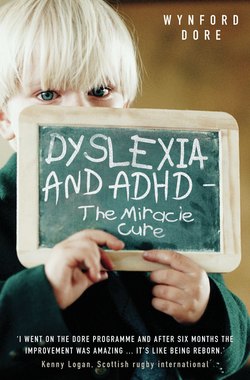Читать книгу Dyslexia and ADHD - The Miracle Cure - Wynford Dore - Страница 17
На сайте Литреса книга снята с продажи.
THE COMMON SYMPTOMS OF ADHD
ОглавлениеGenerally, ADHD can be divided into attention symptoms, hyperactivity symptoms and impulsivity symptoms. The hyperactivity symptoms are usually grouped with the impulsivity symptoms when being assessed.
The DSM IV criteria define nine separate symptoms for both attention and hyperactive/impulsive conditions, and that six or more must be seen to confirm a diagnosis. Also, these symptoms must occur within more than one environmental setting – for example, both at school and at home. Other requirements for diagnosis are that symptoms should have been present from before the age of seven and that there should be no other psychiatric conditions present that could account for these behaviours.
Most specialists use a ‘yes’ or ‘no’ response to each question but recently a more rigorous method has been developed which asks that the responses be graded into four choices ranging from ‘all the time’ to ‘never’. This leads to a more sensitive measure of the behaviour problems. As yet, there are unfortunately no biological tests which can be applied to detect this disorder but this might change in the near future.
The following are the attention-based criteria used during diagnosis:
Often fails to give close attention to details or makes careless mistakes in schoolwork, work or other activities
Often has difficulty sustaining attention in tasks or play activities
Often does not seem to listen when spoken to directly
Often does not follow through on instructions and fails to finish schoolwork, chores or duties in the workplace (not due to oppositional behaviour or failure to understand instructions)
Often has difficulty organising tasks and activities
Often avoids, dislikes or is reluctant to engage in tasks that require sustained mental effort (such as schoolwork or homework)
Often loses things necessary for tasks or activities (e.g. toys, school assignments, pencils, books or tools)
Is often easily distracted by extraneous stimuli
Is often forgetful in daily activities
The following are the hyperactivity-based criteria used:
Often fidgets with hands or feet, or squirms in seat
Often leaves seat in classroom or in other situations in which remaining seated is expected
Often runs about or climbs excessively in situations in which it is inappropriate (in adolescents or adults, may be limited to subjective feelings of restlessness)
Often has difficulty playing or engaging in leisure activities quietly
Often ‘on the go’ or often acts as if ‘driven by a motor’
Often talks excessively
The following are the impulsivity-based criteria used:
Often blurts out answers before questions have been completed
Often has difficulty awaiting turn
Often interrupts or intrudes on others (e.g. butts into conversations or games)
